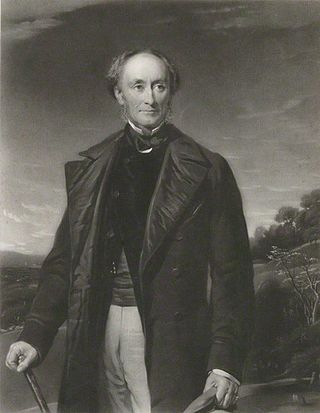Peerages created for prime ministers by reign
| Peerage | Title(s) | Created | Prime Minister | Current status | Notes |
|---|---|---|---|---|---|
King George I, 1714–1727 | |||||
| | Earl of Clare Viscount Haughton | 19 October 1714 | Thomas Pelham-Holles 2nd Baron Pelham | Extinct 17 November 1768 | Created Before Premiership Created with a special remainder |
| | Duke of Newcastle-upon-Tyne Marquess of Clare | 11 August 1715 | Thomas Pelham-Holles, 1st Earl of Clare | Extinct 17 November 1768 | Created Before Premiership Created with a special remainder |
King George II, 1727–1760 | |||||
| | Baron Wilmington | 8 January 1728 | Sir Spencer Compton | Extinct 2 July 1743 | Created Before Premiership |
| | Earl of Wilmington Viscount Pevensey | 14 May 1730 | Spencer Compton, 1st Baron Wilmington | Extinct 2 July 1743 | Created Before Premiership |
| | Earl of Orford Viscount Walpole Baron Walpole of Houghton | 6 February 1742 | Sir Robert Walpole | Extinct 2 March 1797 | During Premiership |
| | Duke of Newcastle-under-Lyne | 17 November 1756 | Thomas Pelham-Holles, 1st Duke of Newcastle-upon-Tyne | Extinct 25 December 1988 | Created with a special remainder |
King George III, 1760–1820 | |||||
| | Baron Pelham of Stanmer | 4 May 1762 | Thomas Pelham-Holles, 1st Duke of Newcastle | Extant | During Premiership Created with a special remainder |
| | Earl of Chatham Viscount Pitt | 4 August 1766 | William Pitt the Elder | Extinct 24 September 1835 | During Premiership |
| | Marquess of Lansdowne Earl of Wycombe Viscount Calne and Calston | 6 December 1784 | William Petty, 2nd Earl of Shelburne | Extant | |
| | Baron Grenville | 25 November 1790 | William Grenville | Extinct 12 January 1834 | Created Before Premiership |
| | Viscount Sidmouth | 12 January 1805 | Henry Addington | Extant | |
| | Viscount Wellington Baron Douro | 4 September 1809 | Sir Arthur Wellesley | Extant | Created Before Premiership |
| On 5 February 1811, George Prince of Wales became the Prince Regent | |||||
| | Earl of Wellington | 28 February 1812 | Arthur Wellesley, 1st Viscount Wellington | Extant | Created Before Premiership |
| | Marquess of Wellington | 3 October 1812 | Arthur Wellesley, 1st Earl of Wellington | Extant | Created Before Premiership |
| | Duke of Wellington Marquess Douro | 11 May 1814 | Arthur Wellesley, 1st Marquess of Wellington | Extant | Created Before Premiership |
| | Viscount Gordon | 16 July 1814 | George Hamilton-Gordon, 4th Earl of Aberdeen | Extant | Created Before Premiership |
King George IV, 1820–1830 | |||||
| | Viscount Goderich | 28 April 1827 | F. J. Robinson | Extinct 22 September 1923 | Created Before Premiership |
King William IV, 1830–1837 | |||||
| | Earl of Ripon | 13 April 1833 | F. J. Robinson, 1st Viscount Goderich | Extinct 22 September 1923 | |
Queen Victoria, 1837–1901 | |||||
| | Earl Russell Viscount Amberley | 30 July 1861 | Lord John Russell | Extant | |
| | Earl of Beaconsfield Viscount Hughenden | 21 August 1876 | Benjamin Disraeli | Extinct 19 April 1881 | During Premiership |
King Edward VII, 1901–1910 | |||||
| no peerage creations for prime ministers | |||||
King George V, 1910–1936 | |||||
| | Earl of Midlothian Viscount Mentmore Baron Epsom | 3 July 1911 | Archibald Primrose, 5th Earl of Rosebery | Extant | |
| | Earl of Balfour Viscount Traprain | 5 May 1922 | Sir Arthur Balfour | Extant | Created with a special remainder |
| | Earl of Oxford and Asquith Viscount Asquith | 9 February 1925 | H. H. Asquith | Extant | |
King Edward VIII, 1936 | |||||
| no peerage creations for prime ministers | |||||
King George VI, 1936–1952 | |||||
| | Earl Baldwin of Bewdley Viscount Corvedale | 8 June 1937 | Sir Stanley Baldwin | Extant | |
| | Earl Lloyd-George of Dwyfor Viscount Gwynedd | 12 February 1945 | David Lloyd George | Extant | |
Queen Elizabeth II, 1952–2022 | |||||
| | Earl Attlee Viscount Prestwood | 16 December 1955 | Clement Attlee | Extant | |
| | Earl of Avon Viscount Eden | 12 July 1961 | Sir Anthony Eden | Extinct 17 August 1985 | |
| | Baron Home of the Hirsel | 19 December 1974 | Sir Alec Douglas-Home | Extinct 9 October 1995 | Life peerage Earl of Home before becoming prime minister |
| | Baron Wilson of Rievaulx | 16 September 1983 | Sir Harold Wilson | Extinct 24 May 1995 | Life peerage |
| | Earl of Stockton Viscount Macmillan of Ovenden | 24 April 1984 | Harold Macmillan | Extant | |
| | Baron Callaghan of Cardiff | 5 November 1987 | Sir James Callaghan | Extinct 26 March 2005 | Life peerage |
| | Baroness Thatcher | 26 June 1992 | Margaret Thatcher | Extinct 8 April 2013 | Life peerage |
King Charles III, 2022–present | |||||
| | Baron Cameron of Chipping Norton | 17 November 2023 | David Cameron | Extant | Life peerage |



